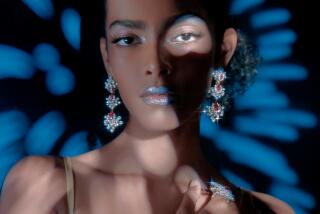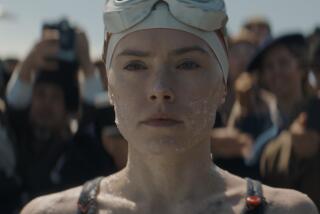Filmmaker’s jewelry line is also a platform for raising awareness about oceans’ plight
Documentary filmmaker Susan Rockefeller’s eponymous ocean-inspired jewelry line is filled with treasures inspired by an overworked sea. Sea creatures carefully crafted in gold, silver and precious gems are the tools she uses to spotlight the plight of our world’s oceans.
Married to fellow sea-lover and philanthropist David Rockefeller Jr. in 2008, she launched the jewelry line on World Ocean Day in 2012. Her pieces ($190 to $16,600) use natural-colored cultured freshwater Honora Ming pearls and recycled metals. .
“My company’s tag line is ‘Protect what is Precious,’” says Rockefeller, whose documentary short film “Mission of Mermaids” details the compelling need for ocean conservation. “We want to use beauty and imagination as a platform to help wake people up.”
What made you want to begin a jewelry company focused on wonders from the sea?
My vision came after making the feature [documentary] film “A Sea Change,” on ocean acidification. I realized that as a society we needed to awaken people to the plight of our oceans, and I wanted to find a way to do so through both film and fashion. When women or men wear accessories, people admire the quality of the piece of the design, and this serves as a great conversation starter. From dog tags with inspired messaging to tokens from the sea and gorgeous pearls, my hope is that my collections serve as a platform for education and activism.
How do your jewelry designs begin? Can you walk us through the process?
Design inspiration can come from anywhere — a film, a piece of art, nature. Once I find my inspiration, our team researches ways to create and make the items wearable for our customers. We work with some incredible local NYC artists that create the wax carving so we can make the master model. The wax carving is a true piece of art; however, we must always take a photo of it because as soon as it’s cast, the wax melts and it’s gone forever. It’s what’s known as the lost-wax technique. Once we have our model, samples are casted and then perfected. This process continues to fascinate me. When we have samples, we “wear test” them to make sure that they’ll be comfortable for our clients.
Many ocean conservationists are calling for a ban on coral sales. Should coral be seen in the same light as ivory, something no longer to be exploited for jewelry and/or luxury goods?
Yes. Think of coral as the hearth and home to the health
of the ocean ecosystem. If you wear coral, you are basically supporting an industry that kills our sea life. To the naked eye, coral may look more like a rock than a living being, but corals are living organisms that have a calcified outer shell (think crustacean). The same holds true for ivory. To poach these magnificent animals for an aphrodisiac or a carving is unconscionable.
When jewelers say they use only ethical and sustainable sources, what exactly does this mean?
We make sure conflict-free diamonds are used, and we are currently working on a collection with all recycled metals. In terms of sustainable and nonsustainable questions, there are also other things to consider when creating products, such as what factory you use and their safety and employee treatment practices, in addition to product packaging and key messaging to customers.
There are different associations like the Jewelry Vigilance Committee (a U.S. nonprofit that works internationally) as well as environmental regulations that provide guidelines for many manufacturers. We work with two companies, both of whom have impeccable records and strive for continuous improvement. I think as a consumer, you can directly speak or leave messages on websites to get more information and transparency.
With all the threats facing the ocean today — from overfishing to acidic waters, pollution to climate change — what hope do we have to correct this havoc?
There are many ways to be part of the solution. Join many environmental organizations, help in local communities or support international nonprofits like Oceans of NRDC (National Resources Defense Council). I make the analogy that small ripples can make great waves.
To reverse destruction, we need to enforce fishing regulations, minimized by catch, and protect fish habitats.
People can exert great influence if they contact their politicians. Oceana now has over 600,000 Wavemakers or ocean activists. This kind of momentum helped raise awareness and eventually helped ban shark finning in the U.S. A movement of concerned citizens can make great change.
How can jewelry aficionados help raise awareness about the need for ocean conservation?
If you love something, you’re moved to save and take care of it. A beautifully crafted piece of jewelry can be passed down and hopefully along with it a love of the sea. Awareness is a huge mission for my company.






